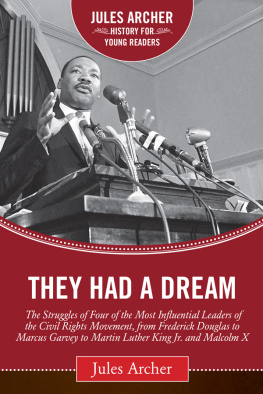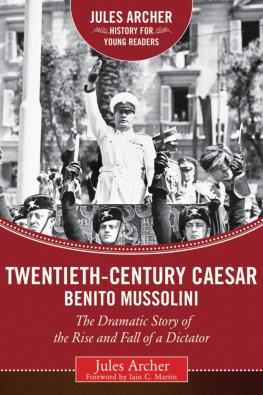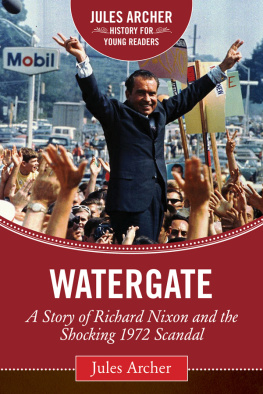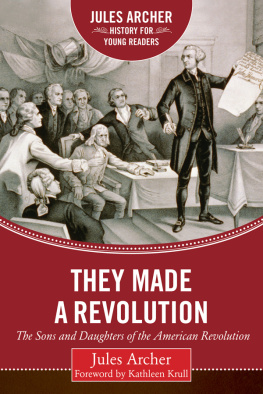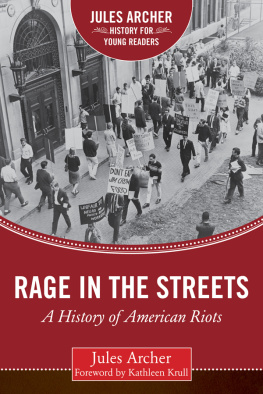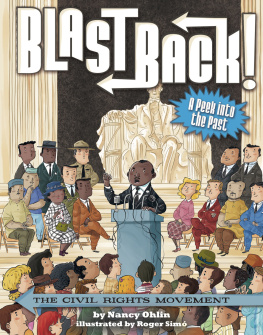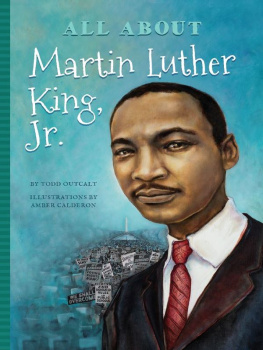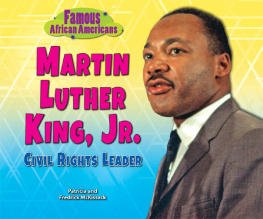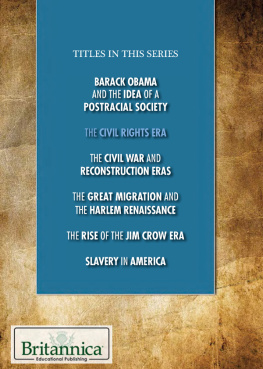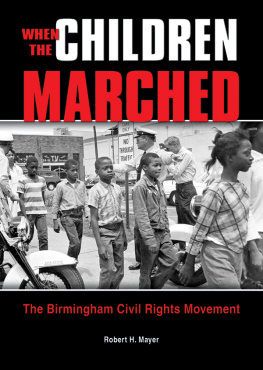THEY HAD A DREAM
Agitate! Agitate! Agitate!
Frederick Douglass (18181895)
The civil rights struggle in the United States occurred in three stages. In the first stage, blacks kidnapped from Africa and made slaves in America struggled for freedom. The charismatic figure of that movement was Frederick Douglass.
Where is the black mans government?
Marcus Garvey (18871940)
The second stage occurred after the Civil War, when freed slaves struggled to surmount prejudice and persecution. The black leader who developed black nationalism and black pride was Marcus Garvey.
I have a dream.
Martin Luther King Jr. (19291968)
The third movement began in the 1960s, when a strong civil rights movement forged ahead in two divergent directions. The Reverend Martin Luther King Jr. organized a powerful nonviolent civil disobedience movement to win equal rights through integration.
I dont advocate violence, but
Malcolm X (19251965)
In contrast, until the last years of his life Malcolm X sought equal rights for blacks through violent confrontation and through racial separation.
Historical texts often reflect the time period in which they were written, and new information is constantly being discovered. This book was originally published in 1993, and much has changed since then. While every effort has been made to bring this book up to date, it is important to consult multiple sources when doing research.
Copyright 1993 by Jules Archer
First Sky Pony Press edition, 2016
All rights reserved. No part of this book may be reproduced in any manner without the express written consent of the publisher, except in the case of brief excerpts in critical reviews or articles. All inquiries should be addressed to Sky Pony Press, 307 West 36th Street, 11th Floor, New York, NY 10018.
Sky Pony Press books may be purchased in bulk at special discounts for sales promotion, corporate gifts, fund-raising, or educational purposes. Special editions can also be created to specifications. For details, contact the Special Sales Department, Sky Pony Press, 307 West 36th Street, 11th Floor, New York, NY 10018 or .
Sky Pony is a registered trademark of Skyhorse Publishing, Inc., a Delaware corporation.
Visit our website at www.skyponypress.com.
10 9 8 7 6 5 4 3 2 1
Library of Congress Cataloging-in-Publication Data is available on file.
Series design by Brian Peterson
Cover photo credit Associated Press
Print ISBN: 978-1-63450-194-1
Ebook ISBN: 978-1-63450-898-8
Printed in the United States of America
Dedicated with love
to my sons
(in alphabetical order this time)
Dr. Dane Archer
of Santa Cruz, California
Dr. Kerry Russell Archer
of Boxford, Massachusetts
Dr. Michael Archer
of Randwick, Australia
and to
Dorothy Sunny Soule
CONTENTS
INTRODUCTION
J UST before the Japanese attack on Pearl Harbor, I was drafted and sent to Camp Croft in South Carolina from my home in New York City. In Spartanburg, I was astonished and disturbed to see local blacks step off the sidewalk into the gutter to allow white people to pass.
Months later, in a New Guinea jungle during World War II, I was given a lift in a jeep by a black GI. I told him what I had seen in Spartanburg. Why, I asked, did southern blacks feel the need to be so cowed and deferential toward whites? I never forgot his reply.
Just let the white man drop his whip, he said with a grim smile, and then watch what happens!
The civil rights struggle in the United States occurred in three stages. In the first stage blacks who had been kidnapped from Africa and made slaves in America struggled for freedom. The charismatic figure of that movement was Frederick Douglass (18181895).
The second stage occurred after the Civil War when freed slaves struggled to surmount prejudice and persecution, a period lasting a century. The black leader who defied discrimination with an inseminating movement that developed black nationalism and black pride was Marcus Garvey (18871940).
The third stage began in the 1960s, when a strong civil rights movement forged ahead in two divergent directions. The Reverend Martin Luther King Jr. (19291968) organized a powerful nonviolent civil disobedience movement to win equal rights through integration. He was supported by millions of whites who believed in social justice. In contrast, Malcolm X (19251965) sought equal rights for blacks through violent confrontation and through racial separation.
The civil rights struggle can best be perceived and understood through the lives and works of these four outstanding black leaders in American history. Each significantly inf luenced and changed the direction of that struggle. Yet, except for Martin Luther King, they are relatively neglected in histories written by, for, and about whites.
The obscurity of these freedom fighters, observes white historian George Levesque, suggests how invisible blacks can be to whites.
These invisible people have been known by several names over the centuries. First they were called Negroes, then coloreds, then blacks, and now some prefer the term Afro-Americans or African Americans. However, for the purposes of this book, the term blacks has been used as the one preferred by the subjects of my biographies, and by most contemporary blacks themselves.
I wish to express my gratitude for the cooperation of Benjamin L. Hooks, executive director/CEO of the National Association for the Advancement of Colored People; John J. Jacobs, president/CEO of the National Urban League, Inc.; Bobby Seale, cofounder of the Black Panthers; and David Hilliard, former Black Panther chief of staff.
My purpose in writing this book is to help white readers understand the story of the black struggle in America as they may never have known it before and to help black readers appreciate fully their proud and remarkable heritage.
Jules Archer
The History of the Black Struggle in America
ONE
Since ancient times, racial prejudice has been used to justify slavery. It was the justification in America when the first twenty Africans were imported into Virginia as bound servants in 1619. British writers defended slavery as the backbone and mainspring of British commerce, calling the kidnapped Africans ignoble savages.
While slavery flourished openly in American colonies, the possibility of slave revolts was a constant fear. Many colonies forbade blacks to assemble, travel without permission, bear arms, or possess liquor. In Virginia, any master who killed his slave for resisting correction went free on the assumption he would not destroy his own valuable property without just cause.
One of the earliest slave revolts took place in New York City in 1712. Eight thousand whites owned two thousand slaves, most of whom were cruelly treated. Gathering secretly after midnight, twenty-three slaves set fire to a house as a signal to the citys blacks that an uprising had begun. Armed with guns, long knives, and hatchets they had secured from drunken crews in port, they attacked whites, killing nine.
The governors soldiers routed and pursued them. Some trapped slaves turned guns and knives on themselves rather than be captured. Twenty-one were executed; some hanged, some tortured and broken on the wheel, some burned to death. This cycle of cruel treatment, revolt, and violent suppression would be repeated throughout slaverys existence in America.
Next page
